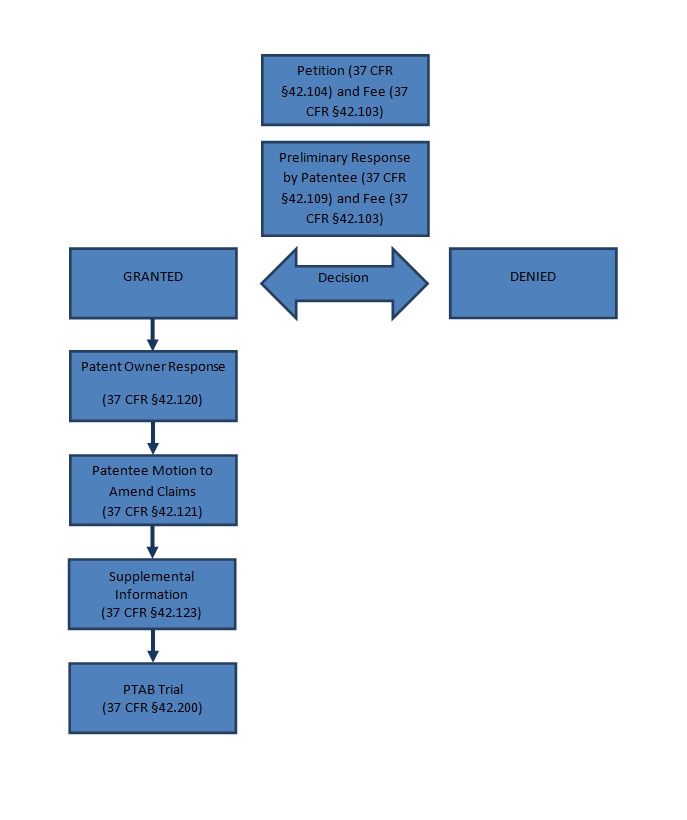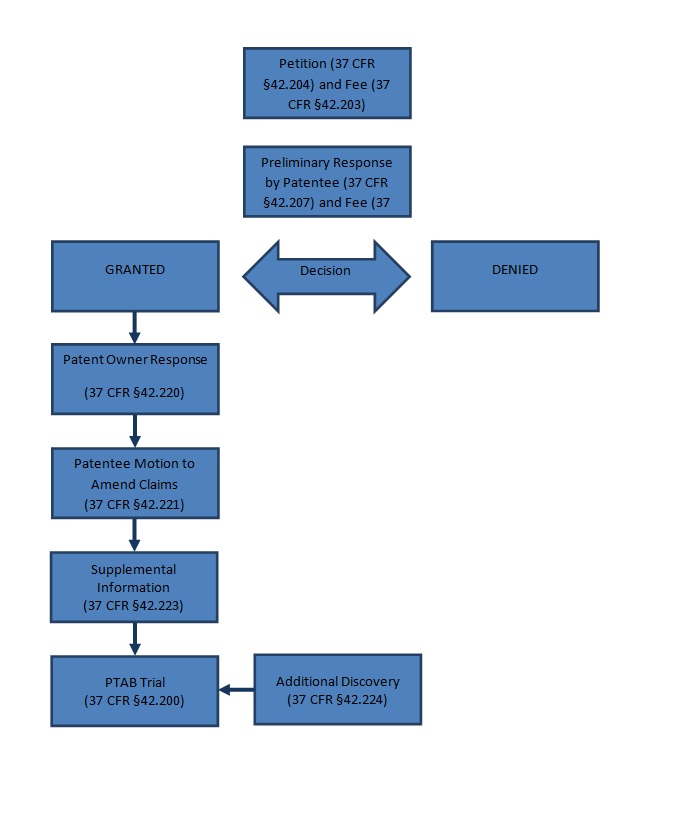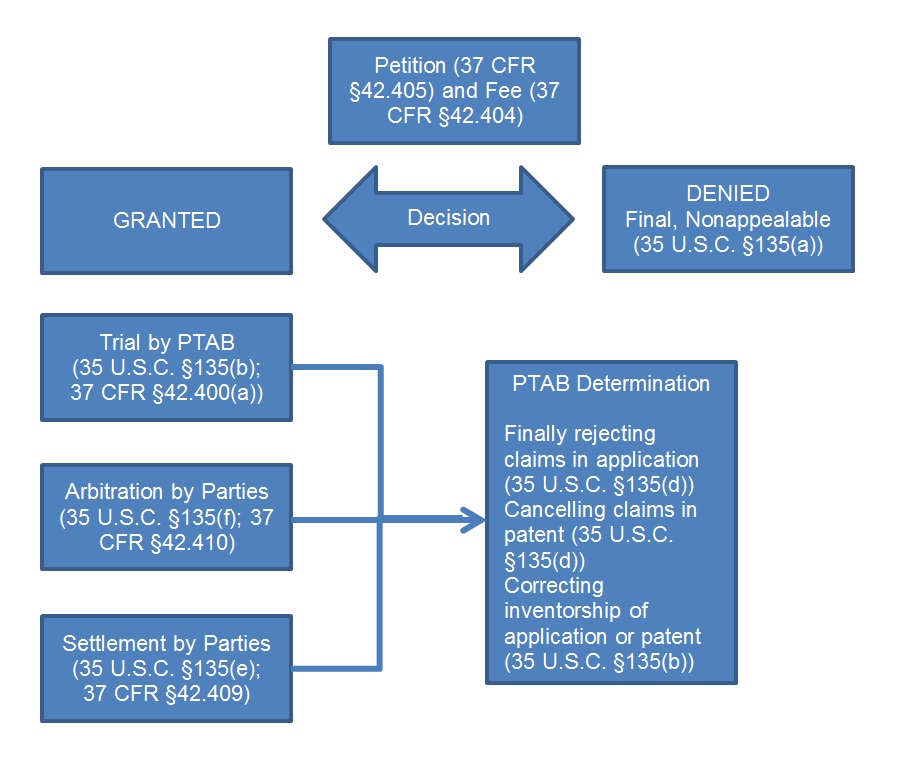On July 17, 2012, the USPTO published final rules for submitting prior art relevant to a pending patent application.
Under 37 CFR 1.290, a third party may submit patents, published patent applications, or other printed publications of potential relevance to the examination of the application. This submission must be made before the application is allowed. 37 CFR 1.290(b)(1). The submission must also be made before the later of the date of the first rejection or six months from the publication. 37 CFR 1.290(b)(2). Certificates of mailing do not apply, so the submission must actually be received by the USPTO by the deadline. 37 CFR 1.290(i); 37 CFR 1.8(a)(2)(i)(I).
The submission must be in writing (37 CFR 1.290(c)) and it must include a document list identifying the documents being submitted (37 CFR 1.290(d)(1)); a concise description of the relevance of each item in the document list (37 CFR 1.290(d)(2)); a copy of each item in the document list (other than US published applications and issued patents(37 CFR 1.290(d)(3)); an English translation of any non-English language item (37 CFR 1.290(d)(4)); and a statement that the submitter is not an individual who has a duty to disclose information with respect to the application under § 1.56 and that the submission complies with the requirements of 35 U.S.C. 122(e) and 37 CFR 1.290 (37 CFR 1.290(d)(5)). The submission must include a heading that identifies it as a third-party submission under § 1.290 and list the application number on each page. 37 CFR 1.290(e).
U.S. patents and U.S.patent application publications should be listed separately from other items. 37 CFR 1.290(e). U.S patents must be identified by patent number, first named inventor, and issue date. 37 CFR 1.290(e)(1). U.S. patent application publications must be identified by patent application publication number, first named inventor, and publication date. 37 CFR 1.290(e)(2). Foreign patents or published foreign patent applications must be identified by country or patent office that issued the patent or published the application; the applicant, patentee, or first named inventor; an appropriate document number; and the publication date indicated on the patent or published application. 37 CFR 1.290(e)(3). Non-patent publications must be identified by author (if any), title, pages being submitted, publication date, and, where available, publisher and place of publication. If no publication date is known, evidence of publication must be provided. 37 CFR 1.290(e)(4).
The submission must be accompanied by the fee set forth in § 1.17(p) ($180) for every ten items or fraction thereof identified in the document list. 37 CFR 1.290(f). This fee is not due for the first submission of three items or less. 37 CFR 1.290(g).
A submission may not be entered or considered by the Office if any part of the submission is not in compliance with 35 U.S.C. 122(e) or 37 CFR 1.290 (37 CFR 1.290(a)). 35 USC 122(e) provides:
(e) PREISSUANCE SUBMISSIONS BY THIRD PARTIES.
(1) IN GENERAL.—Any third party may submit for consideration and inclusion in the record of a patent application, any patent, published patent application, or other printed publication of potential relevance to the examination of the application, if such submission is made in writing before the earlier of—
(A) the date a notice of allowance under section 151 is given or mailed in the application for patent; or
(B) t h e l a t e r o f —
(i) 6 months after the date on which the application for patent is first published under sect ion 122 by the Office, or
(ii) the date of the first rejection under section 132 of any claim by the examiner during the examination of the application for patent.
(2) OTHER REQUIREMENTS.—Any submission under paragraph (1) shall—
(A) set forth a concise description of the asserted relevance of each submitted document;
(B) be accompanied by such fee as the Director may prescribe; and
(C) include a statement by the person making such submission affirming that the submission was made in compliance with this section.
The patent applicant has no obligation to respond to a submission under 37 CFR 1.290 unless the USPTO requests it. 37 CFR 1.290(h).
The Patent Office also amended 37 CFR 1.291 pertaining to protests to applications as follows:
(a) A protest may be filed by a member of the public against a pending application, and it will be matched with the application file if it adequately identifies the patent application. A protest submitted within the time frame of paragraph (b) of this section, which is not matched in a timely manner to permit review by the examiner during prosecution, due to inadequate identification, may not be entered and may be returned to the protestor where practical, or, if return is not practical, discarded.
(b) The protest will be entered into the record of the application if, in addition to complying with paragraph (c) of this section, the protest has been served upon the applicant in accordance with § 1.248, or filed with the Office in duplicate in the event service is not possible; and, except for paragraph (b)(1) of this section, the protest was filed prior to the date the application was published under § 1.211, or the date a notice of allowance under § 1.311 was given or mailed, whichever occurs first:
(1) If a protest is accompanied by the written consent of the applicant, the protest will be considered if the protest is filed prior to the date a notice of allowance under § 1.311 is given or mailed in the application matched with the application in time to permit review during prosecution.
(2) A statement must accompany a protest that it is the first protest submitted in the application by the real party in interest who is submitting the protest; or the protest must comply with paragraph (c)(5) of this section. This section does not apply to the first protest filed in an application.
(c) In addition to compliance with paragraphs (a) and (b) of this section, a protest must include.
(1) A listing of the patents, publication, or other information relied upon An information list of the documents, portions of documents, or other information being submitted, where each:
(i) U.S. patent is identified by patent number, first named inventor, and issue date;
(ii) U.S. patent application publication is identified by patent application publication number, first named inventor, and publication date;
(iii) Foreign patent or published foreign patent application is identified by the country or patent office that issued the patent or published the application; an appropriate document number; the applicant, patentee, or first named inventor; and the publication date indicated on the patent or published application;
(iv) Non-patent publication is identified by author (if any), title, pages being submitted, publication date, and, where available, publisher and place of publication; and
(v) Item of other information is identified by date, if known.
(2) A concise explanation of the relevance of each item listed identified in the information list pursuant to paragraph (c)(1) of this section;
(3) A legible copy of each listed patent, publication, or other item of information in written form, or at least the pertinent portions thereof item identified in the information list, other than U.S. patents and U.S. patent application publications;
(4) An English language translation of all the necessary and pertinent parts of any non-English language patent, publication, or other item of information relied upon any non-English language item identified in the information list; and
(5) If it is a second or subsequent protest by the same party in interest, an explanation as to why the issue(s) raised in the second or subsequent protest are significantly different than those raised earlier and why the significantly different issue(s) were not presented earlier, and a processing fee under § 1.17(i) must be submitted.
(d) A member of the public filing a protest in an application under this section will not receive any communication from the Office relating to the protest, other than the return of a self-addressed postcard which the member of the public may include with the protest in order to receive an acknowledgement by the Office that the protest has been received. The limited involvement of the member of the public filing a protest pursuant to this section ends with the filing of the protest, and no further submission on behalf of the protestor will be considered, unless the submission is made pursuant to paragraph (c)(5) of this section.
(e) Where a protest raising inequitable conduct issues satisfies the provisions of this section for entry, it will be entered into the application file, generally without comment on the inequitable conduct issues raised in it.
(f) In the absence of a request by the Office, an applicant has no duty to, and need not reply to a protest.
(g) Protests that fail to comply with paragraphs (b) or (c) of this section may not be entered, and if not entered, will be returned to the protestor, or discarded, at the option of the Office.
These changes essentially parallel the language of Section 1.290, and impose the same obligations regarding how to submit information to the USPTO.





